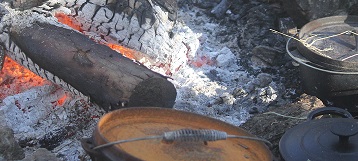What is Heat?
What is heat?
 The temperature of an object is the measurement of the molecular movement of that object, i.e. how fast or how slow the molecules of the object are moving.
The temperature of an object is the measurement of the molecular movement of that object, i.e. how fast or how slow the molecules of the object are moving.
Temperature is a measurement of heat.
So what exactly does heat mean?
Heat is a form of energy which is affected by the molecular activity of a given object. An object is considered to be “hot” if it has a high molecular activity, which means that the molecules of the object are moving rapidly. An object is considered to be “cold” if it has a low molecular activity. When a cold object is heated, its molecules will become excited and they will start to move more rapidly. The molecular movement of an object is directly related to the degree of heat for this object, i.e. the molecular movement increases as the heat of the object increases, and it decreases as the object cools down.
When an object is heated, its molecules will become excited and will occupy more space compared to when the object is cooler.
Heat transfers – Thermal equilibrium
What happens when a hot object comes into contact with a cool object? We know by now that the molecules of a hot object will be in an excited state and will be moving rapidly, whereas the molecules of the cooler object will have a lower energy and will be moving slowly. When the molecules of the 2 objects come into contact with one another, the object with the higher temperature will transfer heat to the object with the lower temperature, and the 2 objects will settle into an energy level that’s between where they each started out. This energy level is known as Thermal Equilibrium, and the 2 objects are then said to be in thermal equilibrium.
For example, what happens when you boil water on the stove during a cold winter day? As you boil the water on the stove, the temperature of the water increases because the water will become hot. This means that the water molecules will be in an “excited state”, and will start moving more rapidly as the water heats further. When the water starts boiling, some of this water will evaporate and turn into water vapour. As the vaporised water in the air travels through the kitchen, some of it will hit the kitchen’s window glass which is generally cooler in temperature, resulting in a condensation of the water vapour into liquid water.
Thermal expansion and thermal contraction
When a solid object is heated up, it would generally expand under the influence of heat. An object can expand in one dimension, two dimensions or in three dimensions. The 2D and 3D expansion are out of the scope of this lesson. If you wish to learn more about them, you can undertake some research onto this.
When an object expands in one dimension after being heated up, the phenomenon is known as “linear expansion”. For example, can you use the concept of linear expansion in order to open a screw-top jar if it was really tough to open? The answer is yes, of course. If the jar’s lid is tough to open, you can simply hold the jar’s lid under hot water and you should be able to open the jar soon afterwards!
But why would you run the lid under hot water to open the jar? Well simply because the lid of the jar would expand when it’s heated up by the running hot water, because the molecules inside the lid will become in an “excited state”, and will start to move at a faster speed. This would make the job of opening the jar relatively easier.
[01/02/2025 12:59:38]